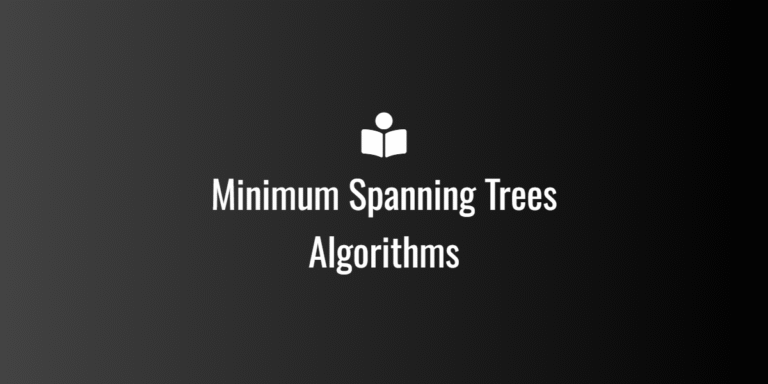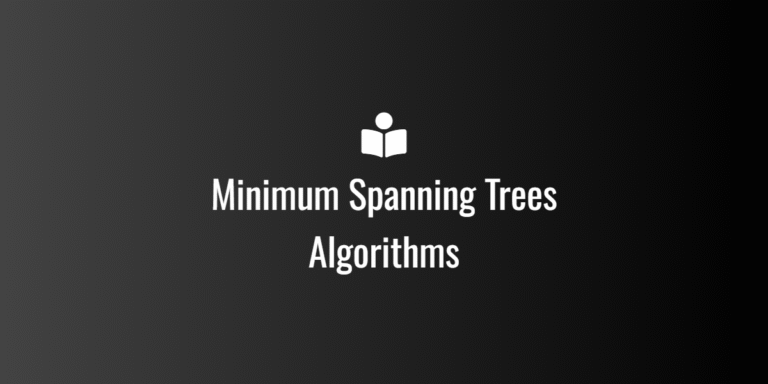Skip to content
What is the primary function of the Session Layer in the OSI model?
A) Data formatting
B) Data transmission
C) Session management between applications
D) End-to-end communication
Answer : C) Session management between applications
Which of the following protocols operates at the Session Layer?
A) TCP
B) UDP
C) RPC
D) IP
Answer : C) RPC
Which layer is responsible for establishing, maintaining, and terminating communication sessions?
A) Network Layer
B) Transport Layer
C) Session Layer
D) Application Layer
Answer : C) Session Layer
The NetBIOS protocol is an example of a protocol operating at which layer?
A) Application Layer
B) Transport Layer
C) Network Layer
D) Session Layer
Answer : D) Session Layer
Which of the following is a key function of the Session Layer?
A) Data segmentation
B) Error detection and correction
C) Session synchronization
D) Packet routing
Answer : C) Session synchronization
Which of the following allows for full-duplex communication at the Session Layer?
A) SMTP
B) HTTP
C) NetBIOS
D) IMAP
Answer : C) NetBIOS
Which protocol is used to manage communication between applications over a network at the Session Layer?
A) UDP
B) HTTP
C) SMB
D) FTP
Answer : C) SMB
Which of the following refers to a controlled flow of data between applications on two different devices?
A) Dialog control
B) Data formatting
C) Error handling
D) Routing control
Answer : A) Dialog control
What happens during session termination at the Session Layer?
A) Connection is reset
B) Data flow is stopped
C) Communication is lost
D) Resources are released and the session is closed
Answer : D) Resources are released and the session is closed
Which of the following is the primary responsibility of the Session Layer regarding data exchange?
A) Data compression
B) Data segmentation
C) Data synchronization
D) Data routing
Answer : C) Data synchronization
In which of the following is the Session Layer responsible for dialog control?
A) Simplex communication
B) Half-duplex communication
C) Full-duplex communication
D) All of the above
Answer : D) All of the above
Which of the following best describes the role of checkpoints in the Session Layer?
A) They ensure data is transmitted efficiently.
B) They allow recovery of data in case of failure.
C) They determine the flow rate of data.
D) They handle data fragmentation.
Answer : B) They allow recovery of data in case of failure.
Which of the following is NOT a protocol used at the Session Layer?
A) NetBIOS
B) RPC
C) FTP
D) PPTP
Answer : C) FTP
The PPTP protocol operates at which OSI layer?
A) Transport Layer
B) Network Layer
C) Session Layer
D) Application Layer
Answer : C) Session Layer
Session Layer’s role in a communication involves ensuring:
A) Secure data transmission
B) Compression of data
C) Data exchange between application processes
D) Routing of data across networks
Answer : C) Data exchange between application processes
Which of the following layers is directly responsible for managing data flow during communication?
A) Transport Layer
B) Session Layer
C) Network Layer
D) Data Link Layer
Answer : B) Session Layer
Which of the following defines the protocol used for handling communication sessions over the internet?
A) RPC
B) IP
C) HTTP
D) SMTP
Answer : A) RPC
What does “session establishment” mean in the context of the Session Layer?
A) A new communication connection is created and initiated
B) Data is transmitted over the network
C) Data is formatted for transmission
D) A session is completed and closed
Answer : A) A new communication connection is created and initiated
Which of the following is NOT part of the session management process?
A) Establishment of connection
B) Termination of the session
C) Error correction during transmission
D) Maintenance of the session
Answer : C) Error correction during transmission
What layer comes directly above the Session Layer in the OSI model?
A) Transport Layer
B) Application Layer
C) Presentation Layer
D) Data Link Layer
Answer : B) Application Layer
Which of the following is true about dialog control in the Session Layer?
A) It ensures data is delivered to the correct application.
B) It handles data synchronization between sending and receiving devices.
C) It prevents the loss of data during transmission.
D) It defines whether the communication is half-duplex or full-duplex.
Answer : D) It defines whether the communication is half-duplex or full-duplex.
The SMB protocol primarily operates at which OSI layer?
A) Network Layer
B) Transport Layer
C) Session Layer
D) Application Layer
Answer : C) Session Layer
Which of the following is a characteristic of full-duplex communication?
A) Data flows in one direction only.
B) Data flows in both directions simultaneously.
C) Data flows in both directions but not at the same time.
D) Data is transmitted using a single channel.
Answer : B) Data flows in both directions simultaneously.
Which of the following protocols ensures the setup and management of sessions?
A) FTP
B) HTTP
C) NetBIOS
D) TCP
Answer : C) NetBIOS
Session Layer operates at which OSI model layer number?
A) Layer 3
B) Layer 4
C) Layer 5
D) Layer 7
Answer : C) Layer 5
What does the Session Layer help with in terms of data flow control?
A) Encryption and decryption
B) Ensuring data is delivered in the correct order
C) Managing data compression
D) Ensuring reliable data transmission across different networks
Answer : B) Ensuring data is delivered in the correct order
Which of the following is not typically a responsibility of the Session Layer?
A) Maintaining connection state
B) Managing dialog between two devices
C) Routing data packets
D) Establishing communication sessions
Answer : C) Routing data packets
The primary purpose of checkpointing in the Session Layer is to:
A) Detect errors in transmission
B) Allow data recovery in case of transmission failure
C) Format data for presentation
D) Manage application session termination
Answer : B) Allow data recovery in case of transmission failure
Which of the following session control methods is supported by the Session Layer?
A) Flow control
B) Error detection and correction
C) Session synchronization and dialog control
D) Data encryption
Answer : C) Session synchronization and dialog control
Which layer is responsible for the actual end-to-end transmission of data, ensuring the complete data transfer?
A) Session Layer
B) Transport Layer
C) Network Layer
D) Application Layer
Answer : B) Transport Layer
Which of the following is the function of the Session Layer in relation to application processes?
A) Secure the transmission of data between applications
B) Provide routing for data transmission
C) Control dialog and manage data transfer between applications
D) Format data for the network layer
Answer : C) Control dialog and manage data transfer between applications
Which protocol is used for establishing remote sessions between computers?
A) SSH
B) FTP
C) Telnet
D) NetBIOS
Answer : C) Telnet
Which of the following best describes the synchronization function in the Session Layer?
A) Data is compressed before transmission.
B) Data flow is checked to ensure it follows a logical order.
C) Data is encrypted to ensure confidentiality.
D) Data is segmented into smaller chunks for faster transmission.
Answer : B) Data flow is checked to ensure it follows a logical order.
In the Session Layer, which protocol is used for the management of remote procedure calls?
A) RPC
B) FTP
C) HTTP
D) TCP
Answer : A) RPC
The NetBIOS protocol operates primarily at which OSI layer?
A) Transport Layer
B) Session Layer
C) Network Layer
D) Data Link Layer
Answer : B) Session Layer
Which of the following session management functions is not performed by the Session Layer?
A) Error detection and correction
B) Dialog synchronization
C) Communication session initiation and termination
D) Coordination of data exchange between applications
Answer : A) Error detection and correction
What role does the Session Layer play in ensuring secure data transmission?
A) Encrypting data
B) Compressing data
C) Managing dialog and session integrity
D) Ensuring packets are routed efficiently
Answer : C) Managing dialog and session integrity
Session Layer handles which of the following?
A) Routing data between networks
B) Ensuring data is formatted for the application
C) Managing sessions and dialog control
D) Fragmenting large data packets
Answer : C) Managing sessions and dialog control
Which of the following is part of the Session Layer’s dialog control?
A) Sequence control
B) Flow control
C) Full-duplex or half-duplex communication
D) End-to-end communication
Answer : C) Full-duplex or half-duplex communication
What would happen if the Session Layer didn’t properly manage session synchronization?
A) Data would be lost or out of sequence.
B) Data would be fragmented into smaller packets.
C) Data would be compressed unnecessarily.
D) Communication would be encrypted.
Answer : A) Data would be lost or out of sequence.
Which of the following best describes the function of the Session Layer in ensuring orderly communication?
A) Handling data routing
B) Compressing data
C) Managing the session between applications
D) Ensuring error-free communication
Answer : C) Managing the session between applications
Which protocol manages multiple sessions between a client and server?
A) TCP
B) HTTP
C) NetBIOS
D) FTP
Answer : C) NetBIOS
Session Layer ensures what type of communication?
A) Encrypted
B) Compressed
C) Ordered and synchronized
D) Fragmented and routed
Answer : C) Ordered and synchronized
Which layer above the Session Layer in OSI handles the application data for transmission?
A) Network Layer
B) Data Link Layer
C) Presentation Layer
D) Application Layer
Answer : C) Presentation Layer
Which feature is important for session management at the Session Layer?
A) Data routing
B) Session synchronization
C) Data encryption
D) Data fragmentation
Answer : B) Session synchronization
The primary responsibility of the Session Layer is to:
A) Control the session between communicating applications
B) Provide routing for data between networks
C) Format data for the network
D) Provide encryption services
Answer : A) Control the session between communicating applications
Session Layer interacts directly with which other layer in the OSI model?
A) Application Layer
B) Data Link Layer
C) Network Layer
D) Transport Layer
Answer : A) Application Layer
Which of the following does the Session Layer NOT do?
A) Initiate, maintain, and terminate sessions
B) Handle data routing
C) Manage the flow of data between two applications
D) Synchronize the communication between applications
Answer : B) Handle data routing
In the Session Layer, how does data recovery occur after a failure?
A) By resetting the connection
B) By using checkpoints to resume from the last known good state
C) By encrypting data again
D) By retransmitting all data
Answer : B) By using checkpoints to resume from the last known good state
Which of the following best describes the Session Layer’s relationship with the Transport Layer?
A) The Session Layer defines the application session, while the Transport Layer manages the actual transmission of data.
B) The Session Layer provides data compression, while the Transport Layer ensures error detection.
C) The Session Layer is not connected to the Transport Layer.
D) The Session Layer handles encryption and decryption, while the Transport Layer handles routing.
Answer : A) The Session Layer defines the application session, while the Transport Layer manages the actual transmission of data.
Post navigation



hi!,I like your writing so much! share we communicate more about your post on AOL? I require an expert on this area to solve my problem. May be that’s you! Looking forward to see you.
May I have information on the topic of your article? http://www.kayswell.com